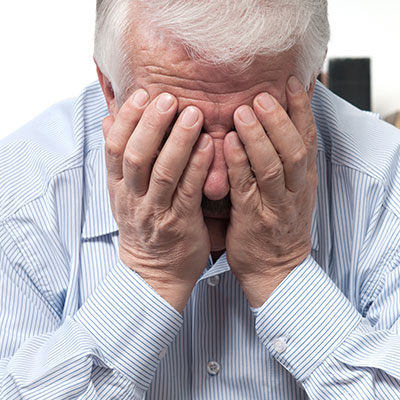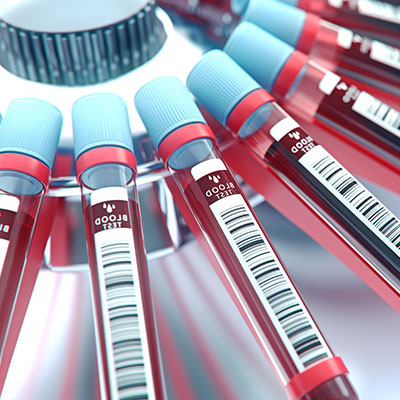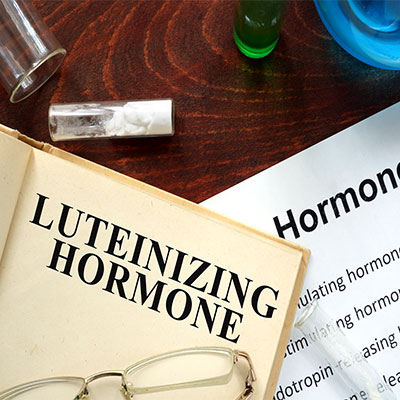Andropause and Low Testosterone: Causes, Symptoms, Treatment
Contents
- What Are the Symptoms of Andropause?
- At What Age Does Andropause Start?
- How Long Does Andropause Last?
- What Kind of a Doctor Can Treat Andropause?
- Do I need a Prescription for Low Testosterone or Andropause Treatment?
- How Do You Test for Andropause?
- What Are the Signs of Andropause?
- Andropause Treatment and Prevention
- What to Expect From Andropause Treatment?
- Typical Results of Andropause Treatment – A Month-by-Month Breakdown
- Testosterone Therapy Results After Two Months
- Testosterone Therapy Results After Three Months
- Testosterone Therapy Results After Four Months
- Testosterone Therapy Results After Five Months
- Testosterone Therapy Results After Six Month
- What Does the Medical Research Have to Say About Men and Andropause?
- Conclusion

When you hear the term “hormone replacement therapy” (HRT), most people think of women and how HRT is traditionally used as a treatment for the symptoms of menopause. However, men also lose critical hormones as they age, and men too can benefit from hormone replacement therapies. In fact, men go through a very similar condition as menopause, known as “andropause.”
What Are the Symptoms of Andropause?
Most men between the ages of 35 and 65 will feel the symptoms of andropause. The signs of andropause, also known as “low testosterone,” include:
- Lack of libido and erectile dysfunction
- Fatigue/lack of energy
- Weight gain, particularly belly fat
- Loss of ability to build muscle, even when working out
- Depression, anxiety
- Mood swings, memory loss, and other cognitive difficulties
However, most if not all of the symptoms of andropause can be treated with hormone replacement therapy for men.
At What Age Does Andropause Start?
Unlike menopause in women, which occurs at a specific point in time, after her last menstrual period, andropause in men occurs more slowly over time. Menopause in women is caused mainly by the depletion of estrogen. Andropause is caused by the slow decrease in testosterone that occurs as a man ages.
Decreasing levels of human growth hormone also contribute to andropause; however, its driving force is age-related testosterone decline. Testosterone is the most important androgen or male hormone. Testosterone levels peak in men at around the age of 20. After that, the testosterone level in the blood slowly drops. By the time a man is in his 60s, his testosterone level could be HALF of what it was in his 20s!
But, the symptoms of andropause can begin to show long before that. Men as young as 40 have been known to experience the symptoms of andropause, a condition also known as hypogonadism, age-related testosterone deficiency, or more simply, “low testosterone.
How Long Does Andropause Last?
As far as how long andropause symptoms can last, the simple answer is as long as they go untreated. As testosterone levels drop at a rate of about 1% to 2% per year after the age of 20, symptoms of andropause will appear gradually and slowly intensify and will remain a problem as long as low testosterone or other age-related hormone imbalances remain unchecked.
What Kind of a Doctor Can Treat Andropause?

Hormone replacement therapy for men is not an exact science. There is no “one-size, fits all” kind of therapy. You want to work with a hormone replacement clinic for men that understands how to treat you as an individual. The best clinic for andropause treatments will be one like ours that has years of experience in developing andropause treatment programs tailored to your unique needs, lifestyle and wellness goals.
Our goal is not to simply “return your hormone levels to normal” but to what is the right balance for you – so you can achieve peak performance at any age.
The doctors and staff at our hormone replacement clinic for men have had years of experience in treating men suffering the debilitating effects of andropause.
We have helped thousands of men increase energy, improve focus, and rejuvenate their intimacy so that they can enjoy a healthier, happy life!
Do I need a Prescription for Low Testosterone or Andropause Treatment?
Andropause treatment will include prescription medications as well as counseling, lifestyle changes, and perhaps nutritional supplements. The primary treatment for andropause is testosterone replacement therapy. The other aspects of andropause treatments are adjuncts to help you to get the most out of your andropause treatment.
You absolutely, 100% need to have a prescription for testosterone replacement therapy. Testosterone, as it is used for andropause treatment, is a prescription medication. You can only receive testosterone treatment with a doctor’s prescription. If you qualify, you can get a prescription for testosterone treatment by following these five easy steps:
- Step 1 – Fill out an online medical history form – This first step is the only step in the process of getting a prescription for testosterone injections that can be done online. You cannot legally BUY testosterone injections online or without a prescription.
- Step 2 – See a doctor –If your online medical history form indicates that you are a good candidate for andropause treatment with testosterone, the next step is to see your doctor. He or she will discuss your medical history and conduct a complete physical exam.
- Step 3 – Laboratory hormone testing – Once you have completed your physical exam, if your doctor suspects you may have low testosterone, you will be referred to a laboratory to have the hormone levels in your blood tested.
- Step 4 – You will obtain a prescription for testosterone treatment – If the results of your laboratory tests indicate that your testosterone levels are below normal, your doctor will prescribe a brand and dosage of testosterone injections that best suit your needs and lifestyle.
- Step 5 – Your testosterone treatments will be delivered to you – Your prescription for testosterone therapy will be forwarded to one of the pharmacies we work with that specialize in filling prescriptions for testosterone injections. The pharmacy, in turn, will deliver your testosterone treatment supplies right to your home!
How Do You Test for Andropause?

If your levels of bio-available testosterone are determined to be low for your weight and age, and if an evaluation of your presenting symptoms warrants it, you will be prescribed testosterone therapy.
In treating andropause, the goal of testosterone replacement therapy is to prescribe you with the minimal dosage of testosterone that will be sufficient to restore the testosterone level in your blood to normal levels. Dosages of testosterone replacement therapy are titrated, which means that your doctor will start your testosterone replacement at the lowest effective dose. Once treatment is underway, your doctor will closely monitor your symptoms and your testosterone levels and may need to adjust your dose accordingly.
What Are the Signs of Andropause?
There are several warning signs that you may be suffering from andropause. The typical signs of andropause can include:
- Diminished sex drive and erectile dysfunction
- Low energy and fatigue
- Loss of muscle mass and increased body fat
- Loss of facial and/or body hair
- Memory loss and other cognitive difficulties
- Mood swings such as increased anger, depression, and irritability
- An overall sense of feeling poorly
Just because you are experiencing any, or all, of the signs and symptoms listed above does not necessarily mean that you have low testosterone. Many of these symptoms can be caused by various other conditions or issues such as obesity, obstructive sleep apnea, thyroid issues, diabetes, clinical depression, and/or the side effects of certain medications. This is why it is so important to see a doctor if you are experiencing the above symptoms and have your testosterone levels checked.
Andropause Treatment and Prevention
The very best treatment for andropause is testosterone replacement therapy. There are several forms of testosterone treatments. Low testosterone treatment can be given as topical gels and creams, subdermal pellets, skin patches, or testosterone injections.
Our doctors have found testosterone injections to be the safest and most effective type of low testosterone treatment. Testosterone injections are prescribed as different “esters.” Each “ester” is simply a different chemical form of testosterone. They differ only in their molecular structure. The most commonly prescribed esters used for the treatment of low testosterone are testosterone enanthate and testosterone cypionate.
In addition to treating andropause with testosterone therapy, there are some ways to naturally boost your testosterone levels and thereby prevent or minimize the symptoms of andropause. These include:
- Smoking cessation
- Reduction of alcohol consumption
- Getting enough sleep
- Getting regular exercise – particularly strength training, such as weightlifting
- Optimizing your diet – maximize protein, whole grains, reduce or eliminate processed foods
- Reducing stress
- Nutritional supplements, particularly vitamins B, C, A, and D, and zinc
What to Expect From Andropause Treatment?
The before and after results of testosterone replacement therapy for the treatment for andropause have been well documented and can be life-changing for men diagnosed with low testosterone.
As with any therapy or medication, your individual results of testosterone therapy will vary. However, when prescribed for low testosterone and taken as long as you follow your doctor’s instructions, most patients achieve remarkable results on testosterone therapy.
They have been enumerable studies both in the US and abroad that have clinically proven the many positive benefits of testosterone therapy as an andropause treatment for men.
Typical Results of Andropause Treatment – A Month-by-Month Breakdown
During your initial four to six weeks of treating andropause with testosterone therapy, the first you will notice is significant increases in vitality and energy. You should also start to see:
- Improved mood
- Improved ability to focus and concentrate
- A reduction of belly fat
- Increased muscle mass
Testosterone Therapy Results After Two Months
Once you have completed two months of testosterone therapy, your ability to focus and concentrate will be greatly improved. This is the time in your program when you will start to see a definite “before and after” body in your mirror. Fat around your midsection should be significantly reduced, and your muscle tone will increase. Other results you can expect after two months of testosterone replacement therapy include:
- Improved sleep
- Continued improvements in libido or sex drive, increased number of spontaneous erections
- A reduction in cholesterol levels
- Increased stamina
- A reduction in systemic inflammation
Testosterone Therapy Results After Three Months
As you complete your third month of testosterone therapy, your benefits will continue to accumulate. In month three, you should see:
- Reduced anxiety and agitation
- Decreased total cholesterol and triglycerides (LDL levels may take a little longer)
- Increased HDL (good) cholesterol may begin at this point
- Improvements in glycemic control
- Increased red blood cell production
- Possible decline in diastolic blood pressure (maximum effects noted at 12-month mark)
- Better exercise capacity
Testosterone Therapy Results After Four Months
As you finish your third and enter your fourth month of testosterone therapy, in addition to continued improvements in strength, vitality, and sexual performance, you can expect the following additional before and after benefits of testosterone:
- Healthier hair
- Reduction of PMS symptoms (pre-menopausal women)
- Reduction of menopausal symptoms (menopausal and post-menopausal women)
- Improved bone health and bone density
Testosterone Therapy Results After Five Months
Although you are unlikely to see new benefits in month five, there will continue to be an overall strengthening of everything that has come before. You will barely be able to recognize the person you were before you started testosterone therapy.
Testosterone Therapy Results After Six Month
Once you are close to completing your first course of testosterone therapy in month 6, you will experience all of the many well-documented benefits of testosterone replacement therapy and an overall improved quality of life.
The complete list of positive results of testosterone therapy are as follows:
- Increased energy
- Improved mood
- Better memory and cognition
- Improved sex life
- Loss of fat, lower BMI, and increased lean muscle
- Reduced risk of cardiovascular disease
- A reduce your risk of osteoporosis
- An overall improvement of quality of life
What Does the Medical Research Have to Say About Men and Andropause?

For example:
A 2011 study on when to expect to see results from testosterone therapy found, “Effects on sexual interest appear after three weeks plateauing at six weeks, with no further increments expected beyond. Changes in erections/ejaculations may require up to 6 months. Effects on quality of life manifest within 3–4 weeks, but maximum benefits take longer. Effects on depressive mood become detectable after 3–6 weeks with a maximum after 18–30 weeks.”
According to the study, published in the January 2015 edition of Mayo Clinic Proceedings, “evidence from research conducted around the world for several decades suggests a beneficial relationship between [testosterone] therapy and cardiovascular health.”
A 2009 study concluded that “Restoring testosterone levels to within the normal range by using testosterone replacement therapy can improve many of the effects of hypogonadism. Most importantly, these include beneficial effects on mood, energy levels, and patients’ sense of well-being, sexual function, lean body mass and muscle strength, erythropoiesis and bone mineral density (BMD), cognition, and some benefits on cardiovascular risk factors.”
More recently, a 2017 study published in the Journal of the American Medical Association (JAMA) concluded: “Among men with low testosterone, prescription testosterone therapy was associated with a lower risk of cardiovascular incidents.”
Recently, researchers from the prestigious Perelman School of Medicine at the University of Pennsylvania, in association with a dozen other well-respected medical centers nationwide, conducted seven clinical trials in partnership with the National Institute on Aging to determine the value of testosterone replacement therapy for aging men. A recent landmark collective study known as the “Testosterone Trials” (TTrials) concluded that “The trials showed an improvement in all the aspects of sexual function and overall mood.”
The TTrials were a coordinated set of seven placebo-controlled, double-blind trials in 788 men with a mean age of 72 years, designed to determine the efficacy of increasing the testosterone levels of older men with low testosterone through the use of testosterone replacement therapies.
The findings of the Testosterone Trials were published in March of 2018. The key takeaways from the TTrials were that for older men with low testosterone, testosterone treatment for one year:
- Improved all aspects of sexual function
- Improved strength and mobility
- Improved mood and depressive symptoms
- Markedly increased bone mineral density and estimated bone strength.
Conclusion
In clinical studies and as seen in our own practices, testosterone replacement therapy is a safe and effective way to treat men suffering from the most debilitating symptoms of andropause.
Now that you understand more about the relationship between andropause and low testosterone, why don’t you take a minute to contact us and see if testosterone therapy may be right for you.
FAQ
1. What Is Andropause
Andropause is a collection of symptoms that are caused by age-related hormone decline in men. Unlike menopause in women, which occurs at a specific point in time, andropause in men occurs more slowly over time. Andropause is caused by the slow decrease in testosterone that occurs as a man ages. Decreasing levels of human growth hormone also contribute to andropause.
2. What Is Andropause Therapy?
Most andropause therapy involves testosterone replacement. However, age-related decline of other critical hormones such as human growth hormone (HGH) can also contribute to andropause symptoms. Your andropause therapy is unique to your symptoms, needs, and lifestyle. Your andropause treatment could involve testosterone replacement, HGH therapy, or both, along with other treatments. In any event, andropause therapy is designed to make you feel younger, stronger, and improve your confidence, so you can continue to do all the things you enjoy most in life.
3. What Are the Symptoms of Andropause?
The signs and symptoms of andropause, also known as low testosterone or Low-T include:
- Decrease in libido or sex drive
- An overall feeling of reduced virility and vigor
- Changes in mood
- Erectile dysfunction
- Loss of stamina
- Loss of muscle tone
- Weight gain
- Loss of memory and other cognitive issues
4. How Is Andropause Diagnosed?
After a full medical examination and evaluation of your symptoms, a blood test is necessary to test your hormone levels before your doctor can give you an official diagnosis of andropause and write you a prescription for testosterone therapy and/or growth hormone therapy.
5. When Should I Seek Help for Andropause?
The symptoms of andropause develop slowly over time. If you are a man between the ages of 45 and 60, you should seek andropause treatment as soon as you feel that the lack of energy, irritability, sexual health issues, and other problems associated with age-related testosterone loss are preventing you from enjoying a good quality of life/
6. Are There Any Side Effects of Low Testosterone Andropause Treatment?
Testosterone replacement therapy is FDA approved for the treatment of andropause or testosterone deficiency syndrome. It is generally regarded as safe. However, like any drug or medical procedure, there are some potential side effects of testosterone therapy. Most if not all of our patients undergoing andropause treatment go through their program with little or no side effects. In most cases, any side effects that you might experience can usually be resolved by simply adjusting your dose or brand of testosterone.
- Matthew T. Haren, PhD, Moon Jong Kim, MD, Syed H. Tariq MD, Gary A.Wittert MB, BCh, John E. Morley MD, BCh
- Delian Delev, MD, PhD, MHM, Ivanka Kostadinova, Dafinka Ubenova, Ilia Kostadinov
- Antonio Aversa, Andrea M Isidori, MD, PhD, Mariluci Alves Martino, Massimiliano Caprio, Elisa Fabbrini, MD, PhD, Massimiliano Rocchietti March, MD, PhD, Gaetano Frajese, Andrea Fabbri
- Alvin M. Matsumoto
Andropause: A Quality-of-Life Issue in Older Males
Physiological and clinical characteristics of andropause
Androgens and penile erection: evidence for a direct relationship between free testosterone and cavernous vasodilation in men with erectile dysfunction
Andropause: Clinical Implications of the Decline in Serum Testosterone Levels With Aging in Men





